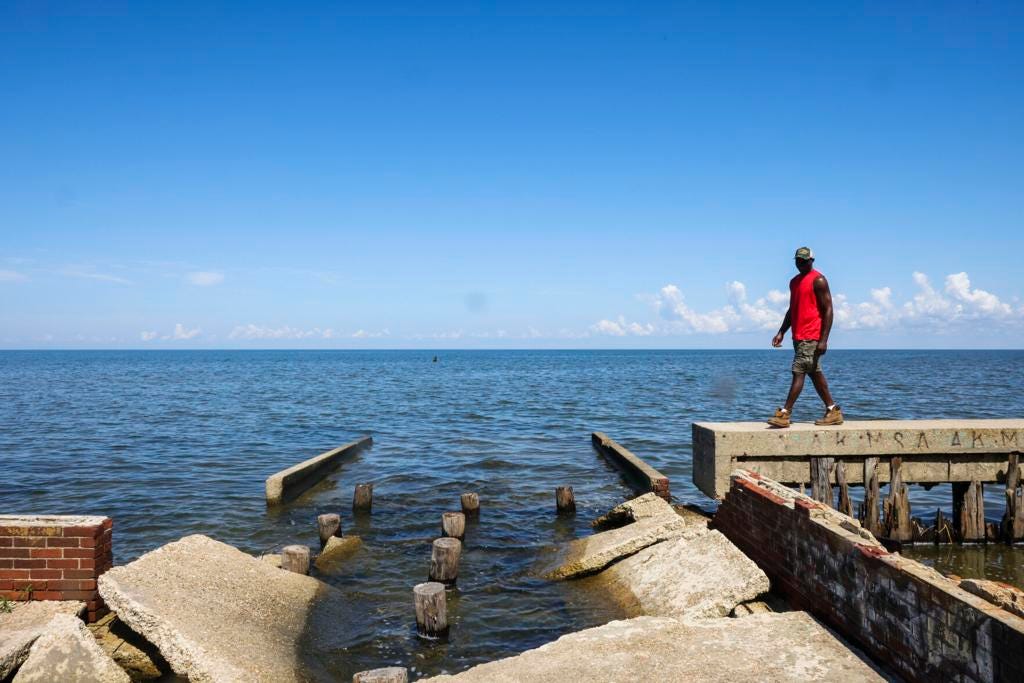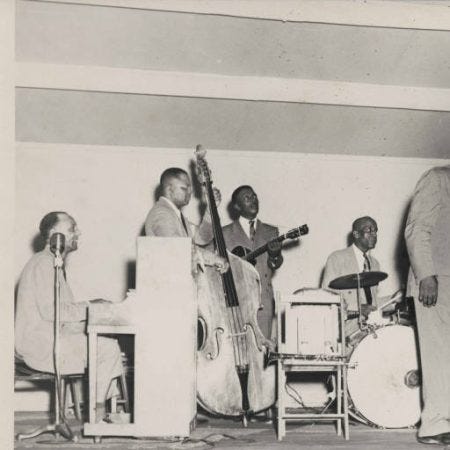Nestled in the vibrant city of New Orleans lies a hidden gem that few people know about, yet it holds a profound significance for the local community. Lincoln Beach, an unassuming stretch of sand and water, has been quietly undergoing a transformation thanks to the dedicated efforts of Reggie Ford, a passionate community organizer. His quest began during the pandemic when he took it upon himself to clean up the beach and make it more welcoming to guests. Ford's passion project grew as he made benches out of recycled pellets and rented a pump to drain muck and water from the park tunnel entrance. The city owns the beach, but the New Orleans Recreation Development Commission did not fund it; thus, anyone who stepped foot on it was a trespasser.
The first video I saw from Ford about the beach provided directions on how to get there. He recorded himself climbing up a wall, down a fence, and then traveling down an unpaved path, eventually leading to a beach. I couldn't believe what I saw because I had no idea New Orleans had beaches. He then walked two blocks to the opposite side's beach. This endeavor piqued the interest of many New Orleanians, resulting in a surge in visitor numbers. Because of its recent popularity, the city council passed an ordinance to completely fund the Lincoln Beach project, amounting to $24 million.
Many people may ask why Ford was so concerned about this beach. At first glance, it appears to be a run-down, polluted, and inconvenient location. However, the landscape has a rich past. Lincoln Beach was once considered the safest spot for black folks to swim in New Orleans. Due to segregation, black people were not permitted to attend the safer option, Pontchartrain Beach. Before the beach's opening in 1938, many black New Orleanians frequented Seabrook, a known safety hazard. Because the city refused to provide lighting or lifeguards it was the site of several tragic drownings, the most prominent of which occurred when a family of six drowned in a sinkhole.
Lincoln Beach was such a rare attraction that its opening brought 25,000 visitors from Louisiana, Alabama, and Mississippi. Still, getting to Lincoln Beach was difficult, as beachgoers had to travel 12 miles on an unpaved road, evade trains on active railroads, and contend with dirty water filled with reptiles, challenges eerily similar to the ones beachgoers face today. The opening of this beach and amusement park meant black families could finally have a space to congregate, sing, dance, and swim—all things we take for granted today.
Even less discussed is that the beach was a hub for black culture. At Lincoln Beach, black musicians felt at home. The opening of the beach featured a performance from Papa Oscar Celestin and His Dixieland Band who played a major role in the development of jazz.
Legendary performers such as Nat King Cole, Sam Cooke, Irma Thomas, Fats Domino, and Earl King frequently performed at the amusement park, making it a live music hotspot. It served as a venue for established artists to perform and nurtured fresh talent. There was a weekly talent show where several musicians began their careers, including the Aubry Twins and the Neville Brothers. Lincoln Beach was renowned as the only area where people of all ages could hear live rhythm and blues.
It was at Lincoln Beach where WMRY Radio (a black oriented station in New Orleans) was able to build their core audience by hosing dances every Thursday.
The lively beach's activity came to a halt when Pontchartrain Beach was integrated in 1964. With excitement that a once forbidden location was now accessible, black New Orleanians flocked to the amusement park, eventually outnumbering white visitors. Pontchartrain Beach closed its gates around 20 years later due to declining attendance, rising insurance costs, and pollution concerns. Irma Thomas, the Drifters, and Fats Domino gave their final concert there in 1983, billed "The Last Ride." Former Lincoln Beach visitors recognized the irony of the situation. John Howard Boucree remarked in an article by 64 parishes. "We'd sit and laugh at that commercial … I say now you going to tell me to celebrate, to go back to Pontchartrain Beach! … And who do they get to sing those commercials? Irma Thomas and a whole lot of black persons … That means nothing to me. You know, [when I was young] you couldn't even look at Pontchartrain Beach.".
In doing research on Lincoln Beach, I found that specifics on the events hosted there were hard to come by. The few articles I’m aware of that talked about the beach reside in New Orleans library archives that I don’t have access to since I’m not in the city for the summer. When I get back I hope to find time to visit and share more about it here. It’s notable to me that a cultural landmark that meant so much to black New Orleanians was barely documented on and I hope theres an effort to restore some of the history of the beach and make it more accessible. Lincoln Beach is a significant piece of our musical and cultural heritage, and its story deserves to be told and preserved for future generations.






